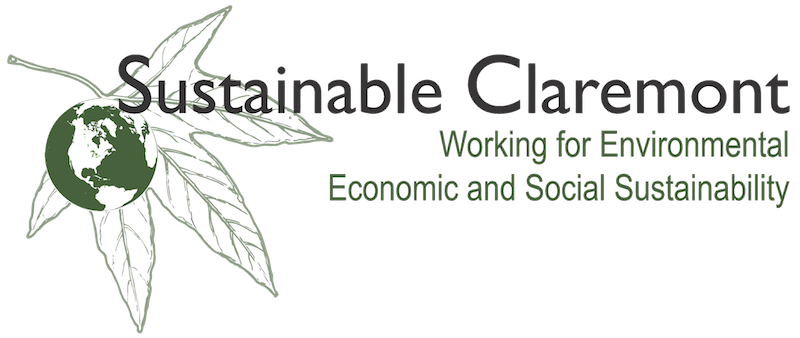Plastic, plastic, plastic. It seems like every year more plastic products appear in our lives. In many ways we are now in the age of plastic as much as the information age.
Plastic is a general term for a large number of synthetic (human-made) substances, called “organic polymers”, usually from petroleum. By some estimates 10% of the oil pumped out of the ground goes to plastic production. Plastics can be molded and shaped in an infinite number of ways, replacing such traditional materials as rubber, plant fiber, wood, glass, or metals. The bad news about plastics is that they don’t go back where they came from when we finish with them. They don’t “return to nature,” but just break into smaller and smaller pieces and continue to fill up our environment.
I have carried reusable shopping bags and tried to avoid single use plastic shopping bags for many years, initially with the thought that it was such a waste to take something made from a non-renewable source – petroleum – use it briefly, and then “throw it away.” Over the years I have become increasingly aware that there is no “away” on our planet. Everything goes somewhere and often has unintended effects. Those single use bags are already having significant adverse environmental effects particularly to numerous animal species.
According to Californians Against Waste, we Californians use 13 billion plastic bags a year. That would work out to 13 million plastic bags here in Claremont, roughly 8 per person every day! Most of those bags are used once for 20 minutes, and then they go into the Mid-Valley Landfill in Rialto. Many others are put in the household recycling bins, but they cannot be processed at the regular recycling facility because they get in the way or gum up the equipment. Then they are sent to the landfill. However, that is not the end of the story. Over the several 100 years it takes for them to break down, smaller particles and component chemicals will enter the soil and ground water with uncertain effects. Many of them will not reach or stay in the landfill and, instead, get blown into the wind. These bags end up in the water-ways and make their way to the ocean in large numbers. One study recently showed that trash found in a catch basin clean-out from the Los Angeles River was 43% plastic film and plastic bags (California Coastal Commission Report, June 2006).
Once in the ocean, plastic products, including bags and particles and pieces from the bags, cause widespread and increasing effects. According to a European Commission report, many animals are known to have suffered from entanglement or ingestion of plastic marine litter. In the North Sea, the stomachs of 94 percent of all birds contain plastic. A December LA Times article reported on a new problem – “The plastisphere, a marine ecosystem that starts with bacteria on particles of discarded plastic …. Scientists fear it might host pathogens and leach dangerous chemicals.”
The proportion of shoppers that choose to “bring their own bags” has remained quite small. Although I feel virtuous when I decline the plastic bag in the store, I don’t think I have inspired many others. Even smaller numbers return the bags to the store for possible recycling. It just isn’t that easy to make that extra effort without some incentive. If we really want to reduce this source of undesirable plastic in our world, legislation to change the rules of the game is needed.
The case against the use of throw away plastic bags has been strong for years. But only recently have significant numbers of California regulations been passed to stop their use, particularly after the California Supreme Court ruled that local jurisdictions can pass and enforce such ordinances.
In the past 2-3 years, Los Angeles and Pasadena are just two of the 90 California cities and counties that have passed ordinances restricting or banning the use of plastic carry out bags. Bills restricting the use of these bags at stores have been defeated by narrow margins in the state legislature twice, but now a new proposal has been introduced which seems to stand a better chance. Claremont has not passed any kind of restriction, apparently from a concern that shoppers will desert our city for Pomona or Montclair or Upland. We could take action now, or wait (and hope) for successful action by the state legislature.
Removing throw away plastic bags from our environment is only one step of many needed to reduce the adverse impact of our way of life on our world, but it is one we can take now.
Demystifying Sustainability is an initiative of Sustainable Claremont (sustainableclaremont.org).
